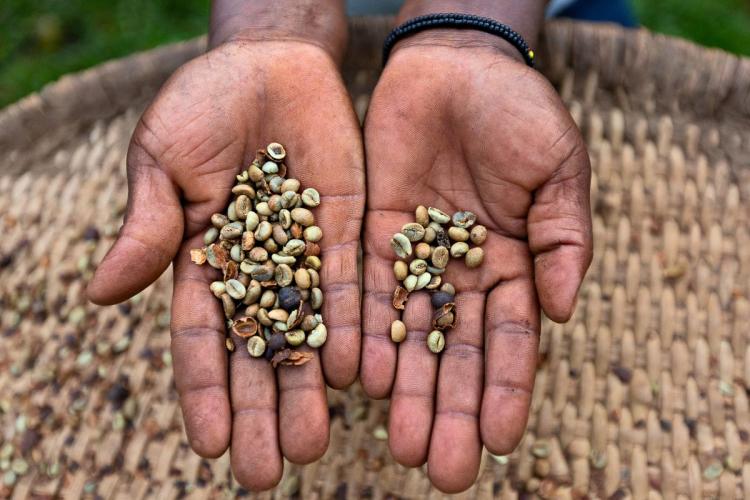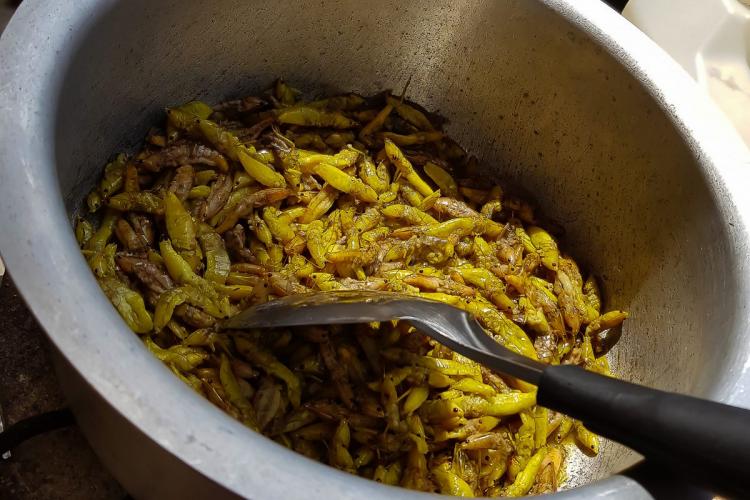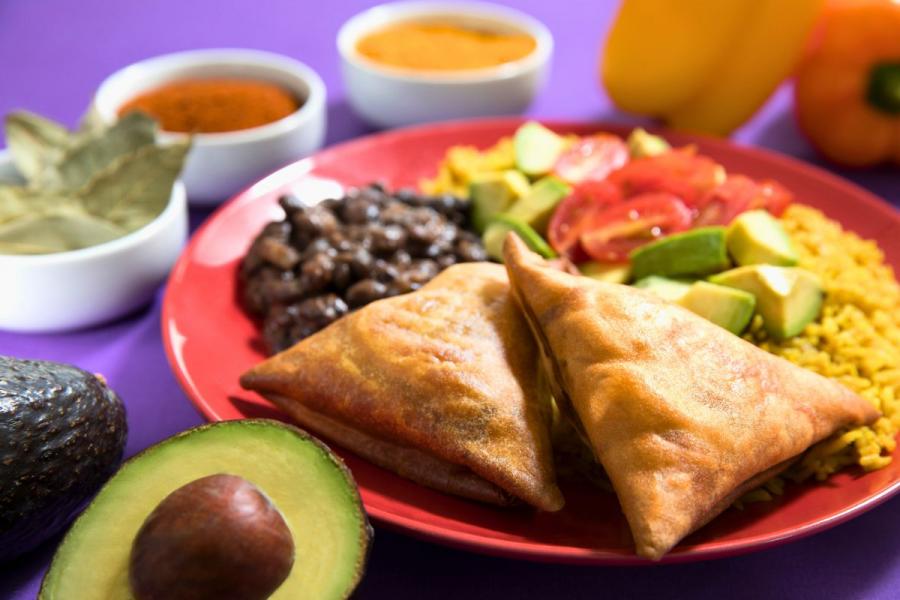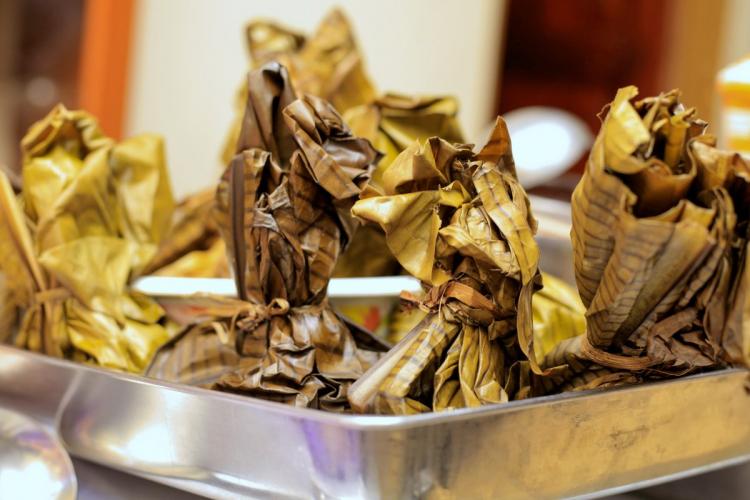Food in Uganda
Introduction to the food culture and cuisine of Uganda.
Uganda, often referred to as the "Pearl of Africa," is a country with a rich tapestry of cultures, each contributing to the diverse and vibrant culinary landscape that defines this nation. Nestled in the heart of East Africa, Uganda is home to over 56 distinct ethnic groups, each with its own unique traditions and gastronomic customs. This cultural diversity is a cornerstone of Ugandan cuisine, creating a mosaic of flavors and dishes that are as varied as the people themselves.
Agriculture plays a pivotal role in Uganda's economy and the daily lives of its people. With the country's fertile soils and favorable climate, agriculture is not just an economic activity but a way of life for the majority of Ugandans. The land yields a bounty of crops like matoke (a type of banana), cassava, sweet potatoes, beans, and maize, which form the backbone of the Ugandan diet. This abundance is a testament to the country's rich natural resources and the agricultural skills passed down through generations.
In Ugandan cuisine, one can taste the story of the nation – a story of convergence, resilience, and a deep connection to the land. As we delve deeper into the daily meals, iconic dishes, and the culinary history of Uganda, we uncover not just the flavors that tantalize the palate but also the cultural narratives that feed the soul of this vibrant country.
Culinary history of Uganda
The history of Uganda, marked by various waves of migration and trade, has left an indelible mark on its cuisine. From the traditional kingdoms that once ruled the land to the influences of Arab traders and British colonization, each era has contributed ingredients, techniques, and flavors to the culinary pot of Uganda. The country's geography, with its lakes, rivers, and fertile highlands, also plays a crucial role, offering a diverse range of fresh produce and fish that feature prominently in many local dishes.
Influence of historical trade routes
Uganda's position in East Africa made it a nexus of historical trade routes, which significantly influenced its culinary landscape. These routes, traversing through the continent, brought in a variety of spices, flavors, and cooking techniques from the Arabian Peninsula and the Indian subcontinent. The intermingling of these external influences with indigenous cooking traditions led to a unique fusion that is evident in Ugandan cuisine today. Ingredients like rice, which was not native to Uganda, became a staple in some regions due to these trade interactions. Spices such as cumin, cardamom, and coriander, now common in Ugandan kitchens, are a testament to these historical exchanges.
Impact of British colonization
British colonization, which began in the late 19th century, also left a lasting impact on Uganda's food culture. The British introduced crops like tea and coffee, which are now significant both for domestic consumption and as export commodities. The colonial era also saw the introduction of Western cooking methods and dishes. Bread, biscuits, and certain types of cakes, previously unknown, became part of the Ugandan diet, especially in urban areas. The British influence extended to dining etiquette and meal structures, with formal dining practices being adopted by the Ugandan elite during and after the colonial period.
Integration of Indian flavors and techniques
Perhaps the most profound external influence on Ugandan cuisine came from the Indian subcontinent. Indians, arriving in Uganda in the late 19th and early 20th centuries, brought with them a plethora of spices, cooking techniques, and dishes. This introduction had a transformative effect on local cuisine, especially in urban centers. Indian dishes like chapati and samosas were adapted to local tastes and ingredients, becoming staples in Ugandan street food culture. The use of spices in cooking was significantly enhanced, leading to richer, more diverse flavor profiles in traditional Ugandan dishes. The famous Ugandan Rolex, a chapati rolled with eggs and vegetables, is a perfect example of this Indo-Ugandan culinary fusion.
In summary, the culinary history of Uganda is a rich tapestry woven from the threads of indigenous traditions, historical trade interactions, colonial influences, and the vibrant infusion of Indian culinary practices. This blend has given Ugandan cuisine its distinctive character, marked by a diversity of flavors and a fusion of cooking techniques that reflect the country's multifaceted cultural heritage.
Ugandan foods
Uganda's fertile land and favorable climate make it an ideal location for a variety of staple crops, which form the foundation of the country's diet and cuisine.
Matoke (bananas): Perhaps the most iconic of Ugandan crops, matoke refers to a specific type of banana that is central to the Ugandan diet. Grown predominantly in the central and western regions, these bananas are typically steamed and mashed, forming a dish that is often compared to mashed potatoes in its usage.
Cassava: This root vegetable is a key staple in Uganda, known for its drought resistance and versatility. Cassava can be boiled, baked, fried, or ground into flour, making it a crucial food source, especially in the northern and eastern regions.
Sweet Potatoes: Widely cultivated across Uganda, sweet potatoes are valued for their nutritional content and adaptability in various dishes, ranging from boiled or mashed forms to sweet potato leaves used as a vegetable.
Millet: Once the primary staple grain in Uganda, millet is especially important in the northern regions. It is often ground into flour and used to make a traditional porridge or brewed into a local beer.
Maize (Corn): Maize is a versatile crop used in various forms – as a boiled or roasted snack, ground into flour for posho (a type of maize meal), or used in making bread and other confections.
Agricultural practices and regional variations
Ugandan agriculture is characterized by small-scale, family-run farms that employ traditional farming methods, although there is a growing trend towards modernization and commercial farming. The country's diverse climate zones allow for different types of crops to be grown in various regions. For instance, the cooler highlands are suitable for tea and coffee cultivation, while the warmer lowlands favor crops like cassava and sweet potatoes. This regional variation in crop cultivation not only influences the local diet but also contributes to the diverse culinary traditions across the country.
Role of livestock and fishing in the Ugandan diet
Livestock farming is another crucial aspect of Uganda's food production. Cattle, goats, sheep, and poultry are widely reared, providing meat, milk, and eggs. In the cattle corridor stretching from the southwest to the northeast, dairy and beef products are particularly important.
Fishing is also significant, especially around the Great Lakes region and the River Nile. Fish like tilapia and Nile perch are common in the Ugandan diet and are often prepared grilled, fried, or as part of a stew. The fishing industry not only supports local diets but also contributes to the economy through both local consumption and export.
In summary, the rich tapestry of Ugandan food production, from its diverse staple crops and traditional agricultural practices to the significant roles of livestock and fishing, paints a picture of a nation deeply connected to its land and waters. This connection is reflected in the everyday meals of its people and the overall culinary identity of the country.
Daily meals in Uganda
The eating schedule in Uganda typically revolves around three main meals: breakfast, lunch, and dinner. This structure reflects both the agricultural lifestyle and urban working patterns of the country.
Breakfast: Usually served early in the morning, breakfast is often a quick and hearty meal to start the day.
Lunch: Taken in the early afternoon, lunch is considered an important meal, providing sustenance for the rest of the day's activities.
Dinner: Typically the main family meal, dinner is served in the evening and is a time for families to gather and share their day's experiences.
Common breakfast Foods
Breakfast in Uganda is both nourishing and energizing, featuring dishes like:
Porridge: Made from maize, millet, or sorghum flour, this porridge is a staple breakfast item, often sweetened with sugar and sometimes enriched with milk.
Katogo: A popular and filling breakfast dish, katogo is a combination of matoke (green bananas) cooked in a sauce, which can be made from beef, groundnut (peanut) paste, beans, or vegetables.
Lunch and dinner
Lunch and dinner in Uganda typically emphasize starchy foods accompanied by a protein-rich sauce or meat.
Starchy Staples: Dishes like posho (maize meal), matoke, rice, sweet potatoes, and cassava form the base of most meals.
Sauces and Meats: These staples are usually served with sauces made from beans, groundnuts, or vegetables, and often include meat such as beef, chicken, goat, or fish.
Vegetarian Options: In many parts of Uganda, especially in rural areas, meals are often vegetarian, with meat being a less frequent addition due to its higher cost.
Snacking culture
Snacking is an integral part of Ugandan food culture, with street foods and local markets playing a significant role.
Street foods: Snacks like roasted maize, samosas, and the famous rolex (a chapati rolled with eggs and vegetables) are popular, especially in urban areas.
Local markets: These markets are hubs for fresh fruits, roasted nuts, and other snacks, providing a taste of the local produce and culinary diversity.
During the rainy season in Uganda, grasshoppers become a popular delicacy.
Boiled or deep-fried, these edible insects are sold by the handful throughout the country. In the bustling capital city of Kampala, young vendors with baskets or plastic buckets navigate the traffic, offering ready-to-eat grasshoppers to commuters during rush hour. Not only are they cherished by many Ugandan communities, but they also serve as a sought-after snack for the urban population.
When it comes to Ugandan cuisine, spicy flavors are often associated with many dishes. However, not every dish packs a fiery punch. Take matoke, for example, a dish of boiled plantains, which has a relatively mild taste. On the other hand, katogo, a meat and vegetable dish, can bring the heat. Looking to add some spice to your meal? Consider trying curry potatoes, a popular and easy-to-make Ugandan side dish that pairs well with grilled chicken or meat stew. The delightful spiciness of this dish creates a perfect contrast to a sweeter marinade.
The daily meals in Uganda are a reflection of the country's agricultural roots and cultural diversity. From hearty breakfasts to substantial lunches and dinners, the emphasis is on locally sourced, nourishing ingredients. The snacking culture, highlighted by a variety of street foods, adds another dimension to the rich culinary landscape of Uganda.
Iconic Ugandan dishes
These iconic dishes are not just staples of the Ugandan diet but also embodiments of the country's rich culinary traditions and cultural heritage. Each dish, with its unique preparation methods and significance, offers a glimpse into the diverse and vibrant food culture of Uganda.
Matoke
Matoke, a type of banana, is not just a staple food in Uganda but also a dish with deep cultural significance. It is predominantly grown in the central and western regions and is central to many traditional ceremonies and family gatherings.
Preparation: Matoke is typically peeled, wrapped in banana leaves, and then steamed until soft. Once cooked, it is often mashed to a consistent, smooth texture.
Cultural Significance: Serving matoke is a sign of hospitality and respect. It is often the centerpiece of a meal during important events like weddings, clan gatherings, and traditional ceremonies. Matoke is also known by other names like matooke or ekitooke.
Luwombo
Luwombo is a traditional Ugandan dish that is highly regarded for its unique preparation and rich flavors.
Preparation: The dish involves stewing meat (commonly chicken, beef, or goat) or vegetables in a sauce made from groundnuts, mushrooms, or fish. The ingredients are wrapped in banana leaves and steamed, allowing the flavors to infuse.
Cultural Aspect: Luwombo is considered a delicacy and is often reserved for special occasions. Its preparation is seen as an art and a symbol of culinary expertise in Ugandan cooking.
Rolex
The Rolex, a playful name derived from “rolled eggs”, is a popular street food that has gained fame across East Africa.
Preparation: This dish is made by frying eggs mixed with vegetables (typically onions, tomatoes, and cabbage) and then rolling the mixture in a chapati.
Popularity: The Rolex is not only a delicious and quick meal option but also an affordable one, making it a favorite among students, workers, and travelers. Its popularity has turned it into a symbol of Ugandan street food culture.
Posho (Maize Meal)
Posho is a staple in many Ugandan meals, known for its simplicity and ability to complement a variety of dishes.
Preparation: Made from maize flour mixed with water, posho is cooked to a thick, dough-like consistency. It is often served with beans, meat, or vegetable stews.
Ubiquity: Posho is a common feature in school meals, family dinners, and is a staple in many households due to its affordability and filling nature. It reflects the agricultural roots of the country and the importance of maize in Ugandan cuisine.
Popular drinks in Uganda
Ugandan beverages, particularly traditional ones, are deeply rooted in the country's cultural and social fabric.
Bushera: A cherished traditional drink, bushera is made from fermented millet or sorghum. It has a slightly sour taste and is often consumed as a refreshing drink, especially in rural areas. The process of making bushera is a time-honored tradition, passed down through generations, and it plays a significant role in social gatherings and ceremonies.
Malwa: Another popular traditional beverage is malwa, a local beer brewed from millet or sorghum. Malwa is unique in its communal consumption, often served in a large pot from which people drink through long straws. This communal aspect of drinking malwa is a symbol of unity and friendship in Ugandan culture.
Coffee and tea
Coffee and tea are not just popular beverages in Uganda but also vital components of the country's economy.
Coffee: Uganda is one of the leading coffee producers in Africa, with Robusta coffee being native to its lands. Coffee is deeply ingrained in the Ugandan lifestyle, often enjoyed in homes and local cafes. The export of coffee is a significant contributor to Uganda's economy.
Tea: Similarly, tea cultivation is an important economic activity, with the country producing large quantities of high-quality tea for both domestic consumption and export. The cool, wet highlands of Uganda provide ideal conditions for tea plantations. In Ugandan households, tea is commonly enjoyed in the morning and evening, often with added milk.
Influence of global trends
The influence of global trends is evident in the growing popularity of soft drinks and alcoholic beverages in Uganda.
Soft Drinks: With urbanization and the influence of Western culture, soft drinks have become increasingly popular, especially among the younger generation. Brands like Coca-Cola and Pepsi are common in urban areas, often consumed as accompaniments to meals or as refreshments.
Alcoholic Beverages: There has also been a rise in the consumption of commercially produced alcoholic drinks, including beers, spirits, and wines. This shift is partly due to the influence of global brands and changing social norms, particularly in urban centers.
In summary, the drinking culture in Uganda is a blend of traditional and modern influences. From the communal enjoyment of bushera and malwa to the widespread consumption of coffee, tea, and modern soft drinks and alcoholic beverages, the variety of popular drinks in Uganda reflects the country's diverse cultural heritage and the impact of global trends on its culinary practices.
The rich tapestry of Ugandan cuisine
Ugandan cuisine is a vibrant and dynamic reflection of the country's rich cultural tapestry. Each dish, ingredient, and cooking method tells a story of the land, its people, and their history. From the staple matoke and the communal malwa to the street-side Rolex, the food of Uganda is deeply intertwined with the nation's identity and traditions.
The diversity of Uganda's culinary landscape is a testament to the various influences that have shaped it over the centuries. The traditional methods of preparing dishes like luwombo and the use of indigenous ingredients like millet and cassava showcase a deep connection to the land and ancestral heritage. At the same time, the integration of flavors and techniques from Indian, Arab, and British cuisines speaks to the country's history as a melting pot of cultures.
In recent times, Ugandan food culture has been evolving in the face of globalization and modernization. The growing popularity of soft drinks and international fast food, alongside traditional staples, reflects a nation that is adapting to new tastes and global trends while still holding onto its culinary roots. This blend of the old and the new is what makes Ugandan cuisine unique and captivating.
As Uganda continues to navigate the waters of global influences, its cuisine remains a powerful symbol of its resilience and adaptability. The enduring popularity of traditional dishes, alongside the embrace of new culinary trends, ensures that Ugandan cuisine will continue to be a rich and evolving part of the country's cultural heritage.





